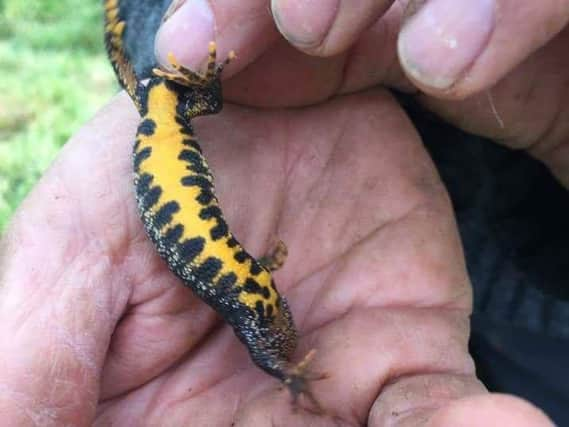Harrogate group slams 'deplorable' trend on wildlife protection


A Harrogate wildlife group concerned by the plight of the great crested newt has hit out at what it says are planning decisions which set a deplorable precedent.
The Harrogate Trust for Wildlife Protection said the outcomes of two public inquiries, threaten not only the future of what had once been the largest known population of legally protected great crested newts in the country but all other legally protected wildlife in the UK.
Advertisement
Hide AdAdvertisement
Hide AdThe group has taken a keen interest in the welfare of the great crested newts, since they were first discovered almost 30 years ago, in a working quarry between Bar Lane and Hazleheads Lane in Knaresborough.
The government’s Planning Inspectorate arranged two public inquiries, after what it said were “complex” and “technical” reports from the charity about wildlife and local residents about continual increases in air pollution from traffic.
But the inspectorate recently granted planning permissions for developers to build over 150 houses on adjacent land.
Laura and Mike McGrogan who represented the local residents said: “We are dismayed that the Planning Inspectorate stated very clearly the reasons for the public inquiries but failed to grapple with those reasons in the judgments which followed.”
Advertisement
Hide AdAdvertisement
Hide AdJohn Barker, who has been the charity’s honorary secretary since 1983, said, “I fear the Planning Inspectorate is accidentally encouraging destructive standards which are harming public health and wildlife.”
Charity volunteers had been maintaining the commitment of the late Linda Elias who, along with her husband Sidney first found the newts in 1989 and then arranged for volunteers armed with the necessary licence, to rescue and take those newts to a newly dug pond in a Scotton nature reserve, owned by the charity.
She carried on her work until her death in January 2009 and is buried in the charity’s nature reserve, facing the pond in which most of the rescued newts were released.
John Barker said: “Most of us have read reports about the enormous financial costs of having to capture and remove a handful of great crested newts, before building projects could go ahead.
Advertisement
Hide AdAdvertisement
Hide Ad“By contrast, our intensive work rescuing thousands between 1989 and 1995 was done entirely at our own financial and emotional cost.”
In 1996, the charity found itself called to give evidence by the Crown Prosecution Service in the first-ever prosecution in the country over great crested newts.
At that time, the project had to be abandoned, because the number of newts still being seen was a high as ever. But the charity had warned that the enormous population would crash, if the habitat was not properly landscaped and managed.
Two years ago, ecologists reported that the population had, indeed, crashed.
Advertisement
Hide AdAdvertisement
Hide AdThe charity volunteers then returned to the scene and quickly found 35 trapped in concrete structures.
Sidney Elias of the charity said: “The fate of the newts has significance in the broadest terms. This was a nationally important test case and a strong signal has been given to planners, to keep degrading and destroying our most important wildlife sites.
“Wildlife still faces tremendous threats from decisions by planners”.
“We are stunned that the Planning Inspectors have ignored our call, for the planners and developers, to say how many new drains will be created and how many legally protected newts will be killed in those each and every year”.